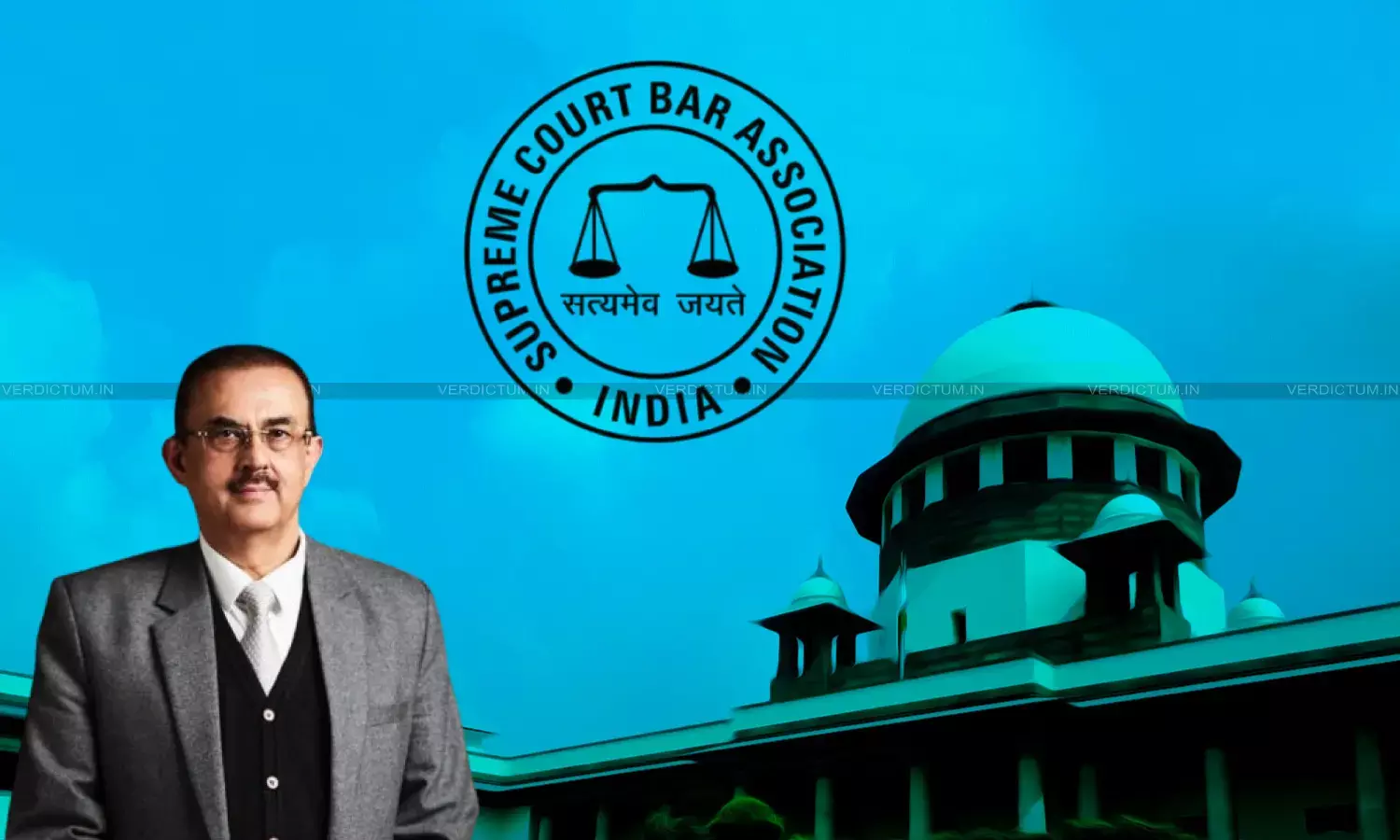Collegium's Structural Flaws Demand Urgent Correction: SCBA Urges CJI To Finalize MoP, Calls For Transparent Judicial Appointments

The Supreme Court Bar Association (SCBA) has written to the Chief Justice of India, Justice Bhushan Ramkrishna Gavai, urging immediate finalization of the Memorandum of Procedure (MoP) governing the appointment of judges to the Supreme Court and High Courts.
In a letter, dated September 12, 2025 the SCBA President Dr. Vikas Singh, conveyed the Bar’s deep concern over what it describes as growing systemic exclusion, arbitrariness, and lack of accountability in judicial appointments. The letter said, “The prevailing Collegium mechanism, while designed to preserve judicial independence, has inadvertently created significant challenges. Its structural flaws demand urgent and comprehensive correction.”
“First, it arbitrarily ignores the vast talent pool within the Supreme Court Bar for elevation to their respective home state High Courts,” the letter added. According to the SCBA, these practitioners possess a broader understanding of national jurisprudence and should be treated as valuable assets to the judiciary.
The letter highlighted the persistent under-representation of women in the higher judiciary as a direct outcome of structural bias. It added, “Second, the current framework has entrenched a troubling under representation of women and those from diverse backgrounds. This is not an abstract concern but a reality borne out by hard data. As of February 2024, women constituted merely 9.5% of the sanctioned strength in High Courts and a stark 2.94% in the Supreme Court.”
The SCBA described these figures as a stark reminder of systemic exclusion and argued that the illusion of meritocracy in the current process only masks deeply embedded privilege and patronage.
The SCBA also raised concerns over the neglect of briefing lawyers and junior counsels—those who, while not arguing in court, play a critical role in preparing cases and supporting litigation. The letter added, “To elevate only the visible face is to perpetuate a flawed understanding of competence, reducing the process to a mere spectacle of a show of faces rather than a substantive evaluation of merit.”
Referring to the Supreme Court's own decision in Supreme Court Advocates-on-Record Assn. v. Union of India (2016), which mandated the revision of the MoP, the SCBA called the continued delay indefensible. The letter stressed that the judiciary and the executive must not postpone this task any longer. The letter proposed:
1. Permanent and Independent Secretariat: An independent Secretariat should be established in each High Court and the Supreme Court to manage candidate data, maintain records of vacancies, and ensure institutional memory, thereby facilitating timely appointments.
2. Transparent Application-Based Process: The current informal system must be replaced with a formal process where applications are invited publicly. This ensures every deserving candidate, including those from the Supreme Court Bar, is considered on demonstrable merit through a structured mechanism.
3. Published Objective Criteria: Verifiable and objective eligibility criteria - such as minimum age, years of practice, reported judgments, and pro bona work - must be codified and published. All selections must be weighed against these transparent benchmarks.
4. Accountability Mechanism: A robust complaints mechanism must be instituted to address grievances and uphold the integrity of the selection process.
In its representation, the SCBA reminded the Chief Justice that this proposed framework is not a call for radical change but a necessary support system that would strengthen the collegium rather than replace it. The Bar referenced a legislative proposal titled the “Facilitation of Appointment of Judges Act,” which was earlier submitted to the Law Ministry as a comprehensive model for reform. The letter added, “This framework is not a radical overhaul but a necessary institutional support system designed to strengthen, not supplant, the Collegium. A good and decisive judge clears dockets, while a judge lacking knowledge of the law stalls justice. Elevation must no longer be a function of proximity or visibility; it must be a reflection of merit, integrity, and constitutional fidelity.”
The letter concluded with a plea for collaborative action. Dr. Vikas Singh expressed confidence that under the leadership of Chief Justice Gavai and the collective wisdom of the collegium, finalizing the MoP would serve as a landmark step in restoring public trust in the judiciary and in reaffirming the core constitutional values of fairness, inclusion, and integrity.
The communication has also been marked to four other senior judges of the Supreme Court Collegium Justice Surya Kant, Justice Vikram Nath, Justice J.K. Maheshwari, and Justice B.V. Nagarathna.


